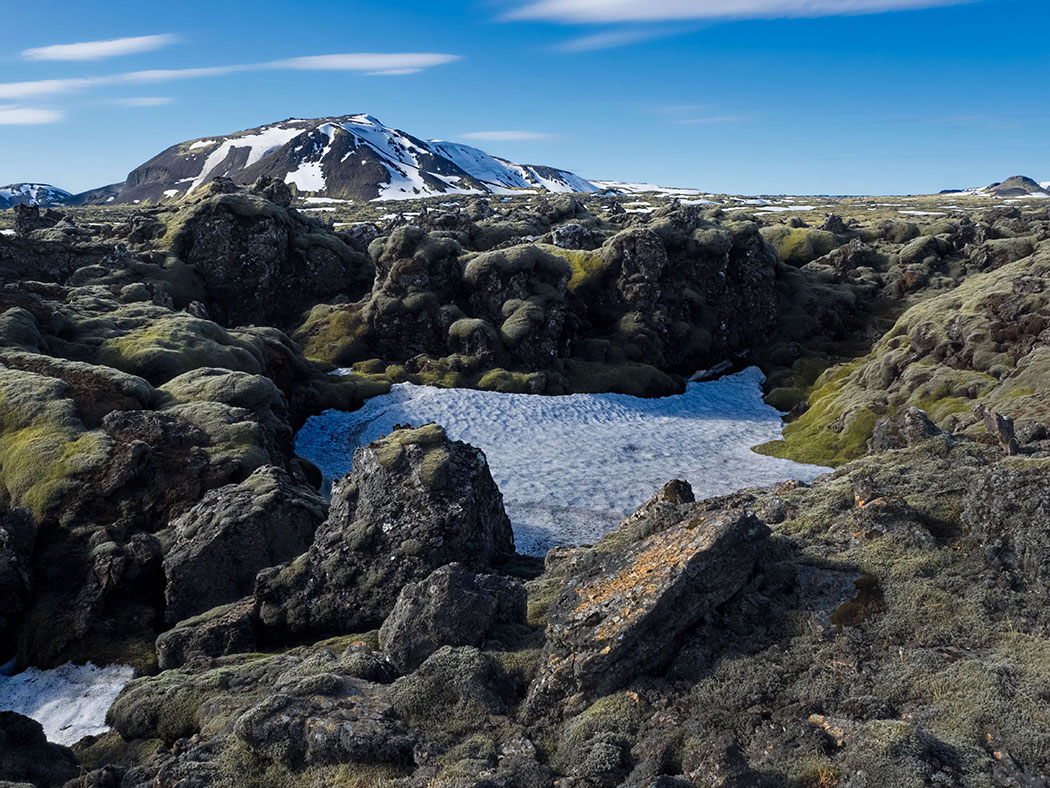
With razor-sharp, tortured lava formations everywhere, the volcanic landscape of Iceland felt otherworldly to me. Iceland has the dubious honor of having more active volcanoes and volcanic activity than anywhere else on the planet. The mid-Atlantic ridge rises from the ocean floor to split the island in two. The eastern half of the country lies atop the Eurasian tectonic plate, while the western portion rides on the American plate. Deep beneath the mantle, a volcanic hot spot lies between the two plates, which are spreading apart at a rate of approximately two centimeters (about .8 inch) per year. Volcanic lava wells up from below, continually creating new landmass as the island expands.
I was struck by how Icelanders live in a landscape that, to most of us, would seem uninhabitable. For miles, nothing but black lava, white ice, and blue skies are visible. Then, suddenly, a small village would appear, with houses built on whatever small patch of flat black rock was available. Often, these structures were completely surrounded and dwarfed by lava formations as high as the roofs. Remarkably, in the desolate, barren volcanic landscape of Iceland, where the only thing that grows are moss and lichen, Icelanders have figured out a way not only to exist, but to thrive.

I recently got back from a trip to Iceland and I felt the same way. It’s such a stark landscape everywhere you look, so desolate. I tried to imagine myself living there but couldn’t. I found the people really interesting though and after chatting with a young lady in college, she told me she was fluent in 4 languages which she said is the norm for a college student in Iceland. For such a remote and desolate place, I found it interesting how global its people are.
Hi Stephanie: I was really quite amazed b the culture and how forward-thinking everyone is. If it weren’t for the cold weather and dark half the year, it would be a perfect place to retire.